
Kristyn Robertson/Demand Media
Every T-bone contains a delicate morsel of buttery-soft tenderloin, as well as a thick slab of meatier New York strip. That alluring combination of two premium steaks in every portion makes the T-bone a little slice of steak-eating heaven. It's nearly perfect as is, but a good marinade can elevate it even further.
Ingredients
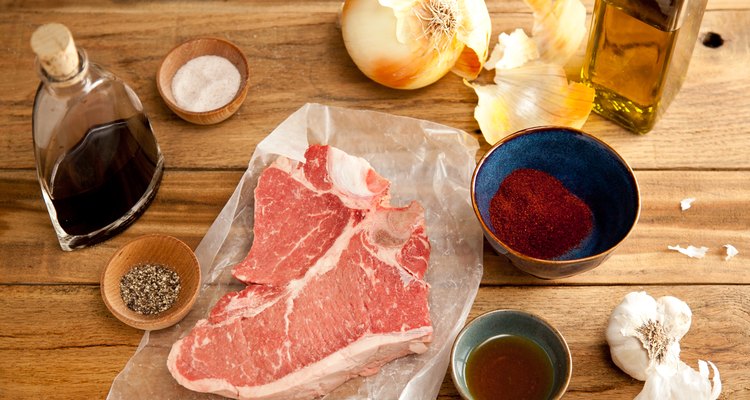
Kristyn Robertson/Demand Media
• Cooking oil, such as olive oil • Soy sauce • Balsamic vinegar • 1-2 cloves garlic • 1 onion or shallot • Salt • Pepper • Additional spices as desired

Kristyn Robertson/Demand Media
Pour a neutral-flavored oil into a mixing bowl or large measuring cup. The oil serves as a base for your marinade, absorbing and distributing fat-soluble flavor molecules.

Kristyn Robertson/Demand Media
Add Worcestershire sauce to your cup or bowl, using no more than 1 part sauce for every 3 to 4 parts oil. Add 1 to 2 tablespoons each of soy sauce and balsamic vinegar for each cup of oil. The acids brighten the flavors of the marinade and help infuse water-soluble flavor molecules.
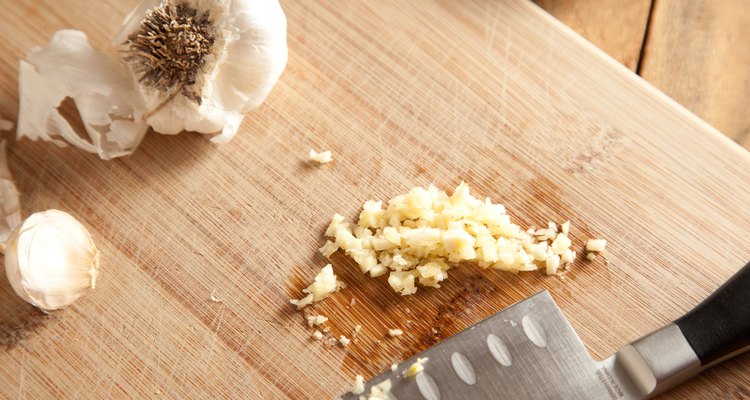
Kristyn Robertson/Demand Media
Mince one or two garlic cloves very finely, then sprinkle them with a pinch of table salt. Drag the flat of your knife blade across the garlic repeatedly, turning it into paste. The end result should be about a tablespoon of garlic per cup of oil. Do the same with a piece of onion or shallot, adding that to the cup as well. Alternatively, use 1/2 teaspoon to 1 teaspoon each of granulated onion and garlic.
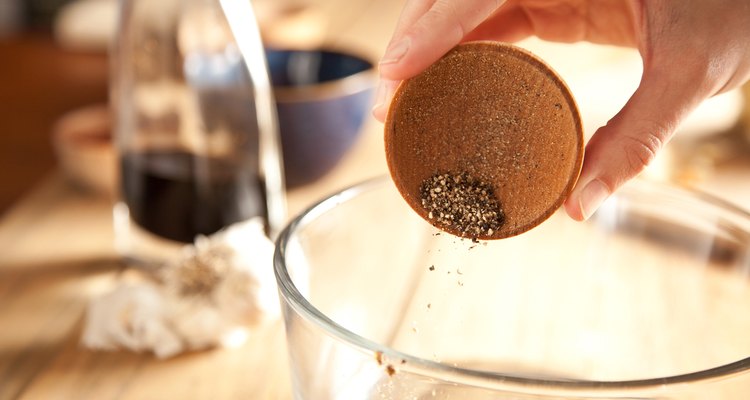
Kristyn Robertson/Demand Media
Add a pinch of salt and several grindings of fresh black pepper. Add small quantities of other spices if you wish, leaning on earthy flavors such as cumin and ground ancho chili, or smoky flavors such as chipotle or pimenton de la vera (smoked paprika). Use your spices sparingly to ensure they don't overpower the beef.

Kristyn Robertson/Demand Media
Whisk the marinade ingredients together briskly, then taste the mixture to ensure its flavors are balanced. Add slightly more salt, sweetness or acidity as needed. If possible, cover the marinade and refrigerate it for several hours to allow the flavors time to develop. Otherwise, proceed directly to preparing the steaks.

Kristyn Robertson/Demand Media
Remove your steaks from their packaging. Gently wipe the bones with a moistened paper towel to remove any tiny fragments of bone left from the meat cutter's saw, then use fresh towels to blot the surface of the steaks and remove any excess moisture.
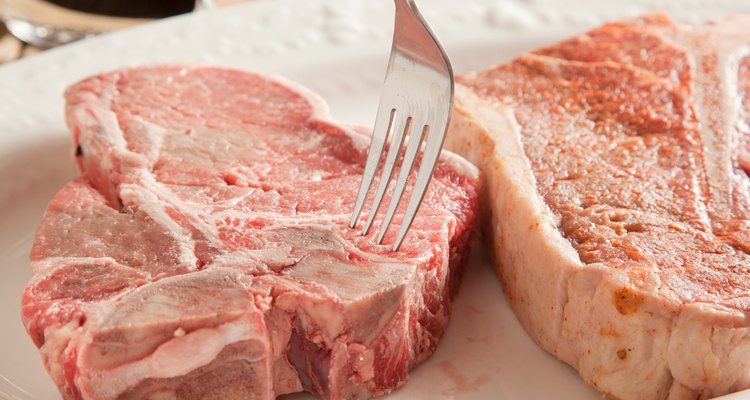
Kristyn Robertson/Demand Media
Pierce the steaks on each side, in several places, with a bamboo skewer or fork. This step is optional, but it provides an avenue for the marinade to enter more deeply into your steak and impart its flavors.

Kristyn Robertson/Demand Media
Arrange your steaks on a large plate or serving platter and brush them liberally with the marinade. Turn them with a gloved hand or a pair of tongs and coat the second side with marinade as well. Alternatively, place each steak in a zipper-seal bag and pour in approximately 1/4 cup of well-mixed marinade. Carefully squeeze excess air from the bag and seal it, ensuring that the steak is evenly coated with the marinade on all sides.

Kristyn Robertson/Demand Media
Marinate the steaks for at least 5 minutes, and no longer than 30. This should provide plenty of time to prepare the grill, and set out any side dishes. After the first few minutes, the cracks and crevices of your steak have absorbed all the marinade they ever will.
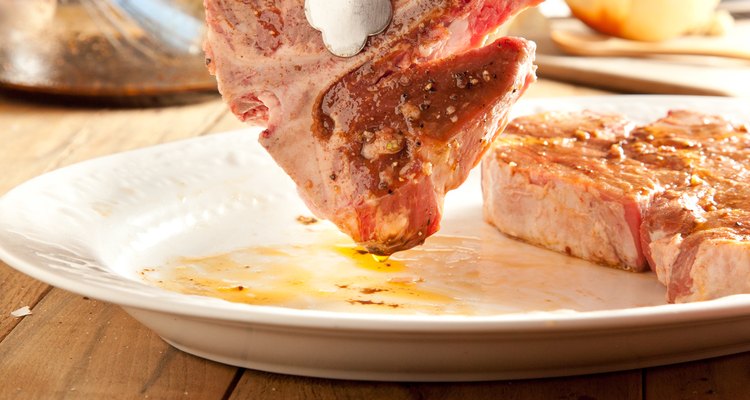
Kristyn Robertson/Demand Media
Remove your steaks from the plate or their individual bags, one at a time, and hold them in your tongs for a moment so any excess marinade can drip away. Transfer them to your grill or pan, and grill, broil or pan-sear the beef to your preferred doneness.
Tips & Tricks
•The sharper and more acidic the liquid you use, the more it should be diluted with oil. Use up to 5 parts oil for every 1 part sharp, unaged vinegar, for example. Four parts oil is usually suitable for 1 part wine or citrus juices, and with milder choices such as Worcestershire or well-aged balsamic and wine vinegars, 3 parts oil should be sufficient.
•Grilling a steak creates browning through a chemical process called Maillard reactions. Amino acids in the beef's proteins break down under the heat, and then the fragments recombine to make complex, savory flavor molecules. Most of the ingredients in this marinade emphasize that savoriness, known by the Japanese term "umami." Soy sauce and Worcestershire sauce are both potent carriers of naturally savory glutamates, and thick, dark balsamic vinegar adds both umami and a trace of caramelized sugar flavor.
•The flavor of the marinade is infinitely variable. Experiment with different oils, acidic ingredients, spices and herbs until you find a blend that suits your personal taste.
•Many cookbooks and recipe writers sharply discourage piercing a steak, on the grounds that it lets juices run out during the cooking and leaves your steak dryer than it should be. This long-established piece of kitchen lore doesn't hold up under scrutiny. The steak's muscle fibers run from top to bottom, so each puncture affects an infinitesimal percentage of the steak's surface area. The remainder of your T-bone remains intact, and the overall effect is negligible.
•If you plan to pan-sear your steak, use a wadded-up piece of paper towel to blot excess marinade from its surface. In the full-contact cooking environment of a hot skillet, steam from the marinade can impede the initial browning that gives the steak its glorious crust and much of its flavor.
Related Articles
How Long Can You Marinate Meat Before ...
Easy Pork Chop Marinade Recipe

How to Cook Worcestershire Marinated ...

How to Make Marinade for Roast Beef

Slow Cooking an Eye of the Round Steak ...

What Happens to My Steak When I ...

How to Cook a Steak After Using a ...
Can I Use White Vinegar to Tenderize ...

How to Cook Alligator Steak

How to Cook Steak on a Baking Sheet

How to Cook Bear Steaks

What Do You Put on a Steak Before ...
Do You Drain the Marinade Before ...

How to Cook Kobe Steaks

How to Marinate Steak

How to Cook Axis Deer Steaks

How to Cook Churrasco Steak in a Pan
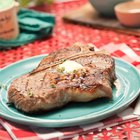
How to Grill T-Bone Steaks
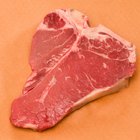
How to Broil Strip Steak
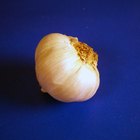
How to Blacken Steaks
References
Writer Bio
Fred Decker is a trained chef and prolific freelance writer. In previous careers, he sold insurance and mutual funds, and was a longtime retailer. He was educated at Memorial University of Newfoundland and the Northern Alberta Institute of Technology. His articles have appeared on numerous home and garden sites including GoneOutdoors, TheNest and eHow.
Photo Credits
Kristyn Robertson/Demand Media